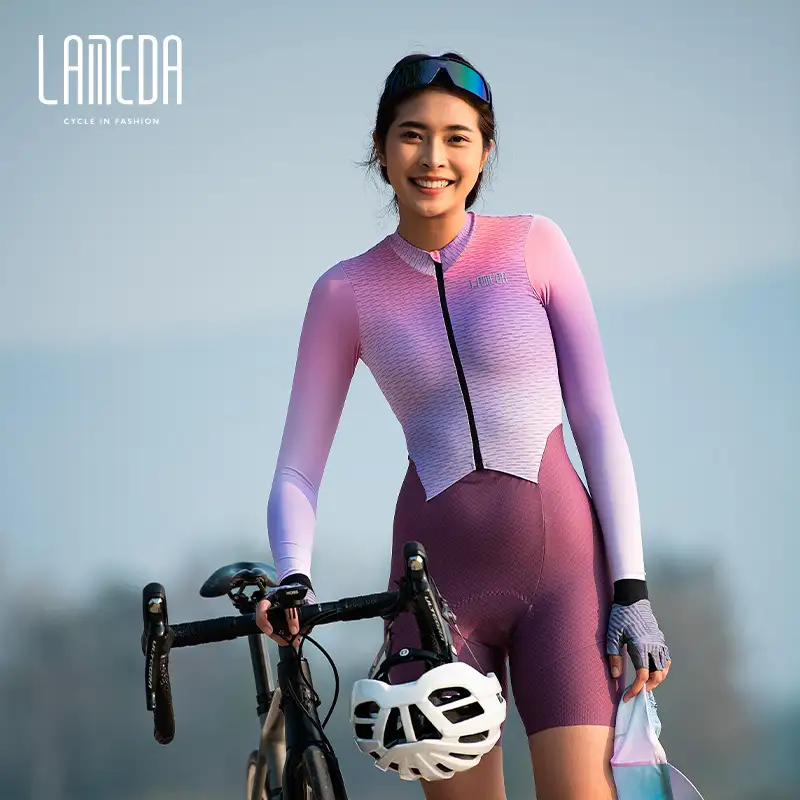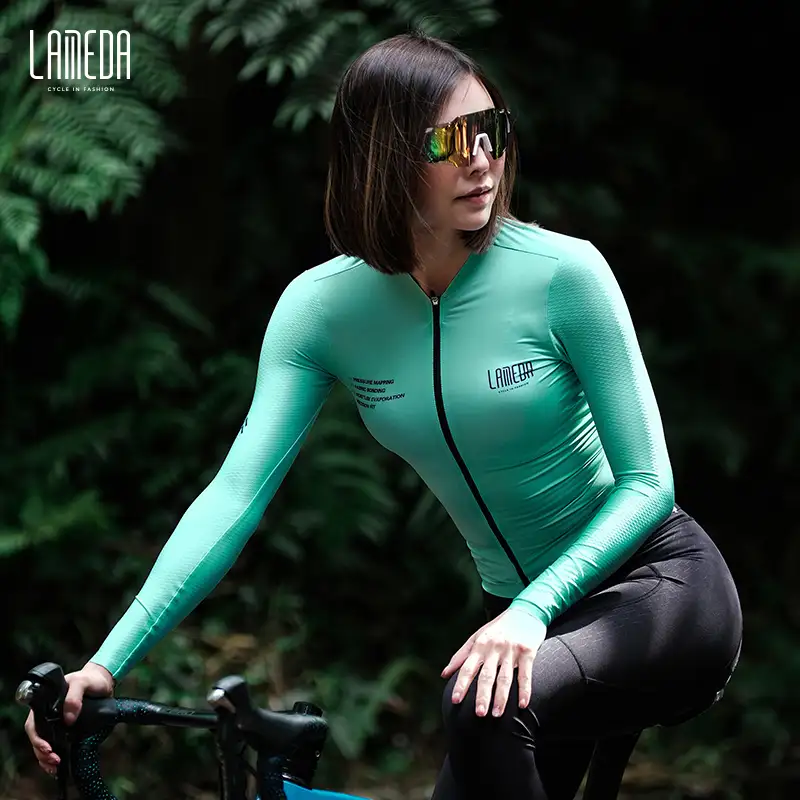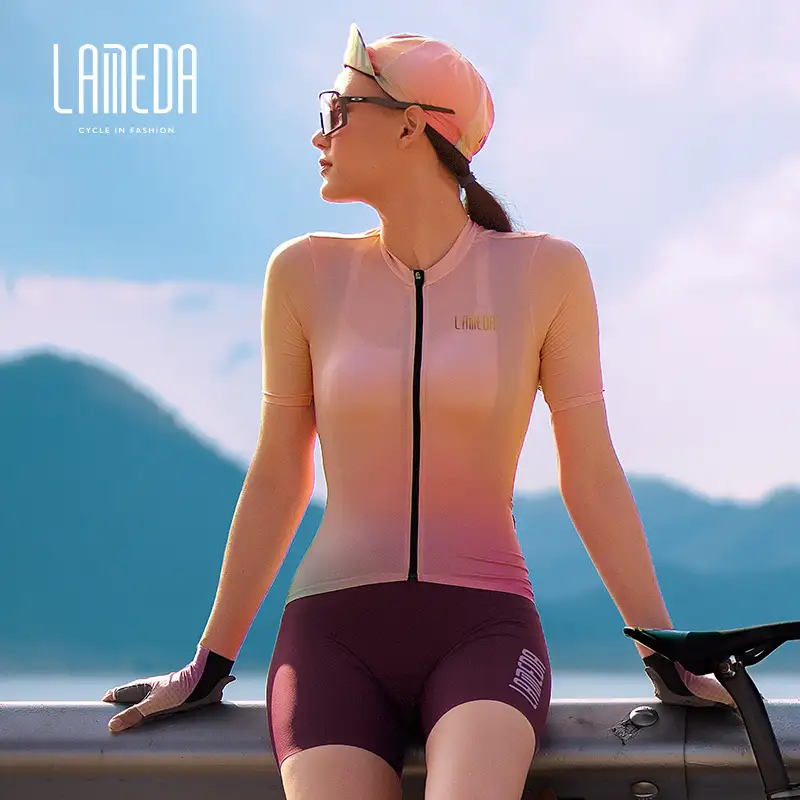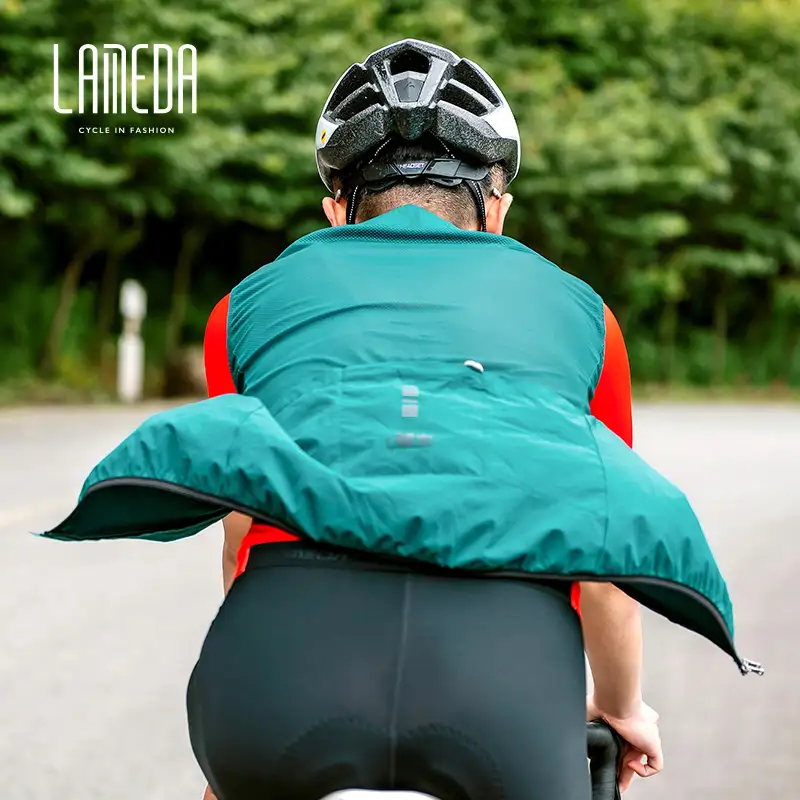When it comes to cycling apparel, the fabric is one of the most important considerations. The right fabrics can provide comfort, breathability, moisture wicking, and other performance benefits during rides. However, with so many fabric technologies available today, it can be difficult to know which options are best suited for cycling. In this article, we’ll break down the key fabric characteristics to look for and provide examples of top cycling apparel fabric technologies on the market.
Comfort – One of the main goals in cycling apparel is keeping the rider comfortable throughout the ride. Seams should be flat and smooth to avoid chafing. The fabric itself should have stretch and flexibility to move with the body. Natural fibers like wool and cotton provide softness, but can absorb moisture. Synthetic fibers like polyester and nylon are popular for their lightweight feel. Blends marry the benefits of different fibers. Ultimately the fabric should feel great against the skin without any irritation.

Breathability – Proper ventilation is essential when riding. Fabrics that are too heavy can overheat and feel stuffy. Lightweight, porous fabrics allow heat and sweat to escape and let air flow through. Mesh paneling offers targeted breathability in heat-prone areas. Synthetics like polyester have natural breathability. Wool also resists odor despite sweat. For cool weather rides, a balance of breathability, warmth and wind resistance is ideal.

Moisture Wicking – Nobody wants to feel soaked in sweat during intense cycling. Effective moisture management keeps riders dryer and more comfortable. Hydrophobic synthetic fibers literally repel water and dry quickly. Polyester, nylon and polypropylene are common examples. The fabric construction also impacts moisture wicking, as tighter knits provide less space for water to collect. A moisture-wicking finish can enhance the performance of any cycling fabric.
UV Protection – On sunny days, UV rays can take a toll during hours of cycling exposure. Choosing fabrics with built-in UV protection helps safeguard your skin. Tightly woven fabrics offer more protection than loose open knits. Common options like nylon and polyester contain UV stabilizers. Light colors also deflect more UV rays. Dark colors absorb UV rays and get hotter. A fabric’s ultraviolet protection factor (UPF) indicates its effectiveness – UPF 50+ is ideal for cycling.

Compressive Fit – Cycling apparel is often designed with compressive fits that hug the body for aerodynamics and muscle support. This requires the use of fabrics with ample stretch and recovery. Spandex and elastane are added to fabric blends to achieve stretchiness. A minimum of 5-10% is ideal for both compression and comfort. Too much spandex can feel restrictive. The overall fabric blend still affects the compression level and recovery.
Wind and Water Resistance – Cycling gear needs protection from the elements like wind and rain. Coated nylon and polyester repel water well. Fleece lined jackets insulate against wind chill. For waterproofing, a DWR (durable water repellent) treatment causes water to bead up and roll off the fabric surface. But DWR fades over time while maintaining breathability. Hard shell jackets use a waterproof and windproof membrane like Gore-Tex that won’t degrade.
Visibility – Being visible to motorists is vital for any cyclist’s safety. Reflective details and bright colors are key. Reflective threading can be woven into the fabric itself or applied as tape or prints. Common reflective fabrics include glass bead technology or 3M Scotchlite. For colors, shades like neon yellow, orange and green stand out well during daytime rides. White is also highly visible both day and night. Avoid dark colors like black which are harder for motorists to see.

Odor Resistance – On multi-day tours or long expeditions, being able to wear cycling apparel multiple times without washing is convenient. Merino wool is naturally odor resistant due to lanolin in the fibers. Synthetics can be enhanced with anti-odor treatments using silver ions or polygiene. This prevents the growth of odor causing bacteria in the fabric. Odor control allows more wears between washes.
Sustainability – Eco-friendly fabrics are an increasing priority for many athletes. Recycled polyester made from plastic bottles diverts waste from landfills. Organic cotton farming protects both the environment and cotton farmers. Econyl nylon is regenerated from fishing nets and other nylon waste. Natural fibers like merino wool, hemp and bamboo are also renewable resources. Choosing sustainable fabrics helps reduce the cycling industry’s environmental impact.
Weight – Grams matter when riding uphill or over long distances. Look for fabric weights under 200 gsm (grams per square meter). Lightweight polyesters and nylons weigh 90-120 gsm typically. High-end ultralight shells can be below 40 gsm. Heavier fabrics like cotton, wool and thicker fleece provide warmth but less breathability. Going as light as possible while retaining needed performance and protection is key.
Common Brands and Technologies – With these fabric characteristics in mind, there are a number of top cycling apparel brands leading the way in technical fabric innovation:
Gore – Gore-Tex waterproof membranes plus Windstopper and Power windproof fabrics.
Castelli – Wide range of high performance cycling fabrics like ProSecco Strada for stretch.
Rapha – Merino wool blends and reflective details.
Assos – Airblock and multilevel membranes. F.I.M chamois technology.
Sportful – Soft, lightweight and stretchy Total Comfort fabrics.
Pearl Izumi – PI Dry quick-drying fabric and reflective elements.
Endura – ExoShell waterproof fabric range.
Craft – Meryl Microfiber for moisture management.
Sugoi – Zap fabric with Coldblack heat reflective technology.
Primal – Primaloft insulated outerwear.
7Mesh – Blue sign approved eco fabrics.
DHB – Made with Italian Vuelta performance fabrics.
LAMEDA – Innovative fabric technologies designed for cycling comfort and performance.
In conclusion, today’s technical fabrics offer immense innovation in balancing light weight, breathability, compression, moisture management and protection from the elements. Considering the riding conditions and your needs around features like visibility, stretch, and sustainability will ensure you select the ideal apparel for comfortable and high-performing rides. Leveraging fabrics from leading brands allows you to enjoy the latest material technologies tailored specifically for cycling.
